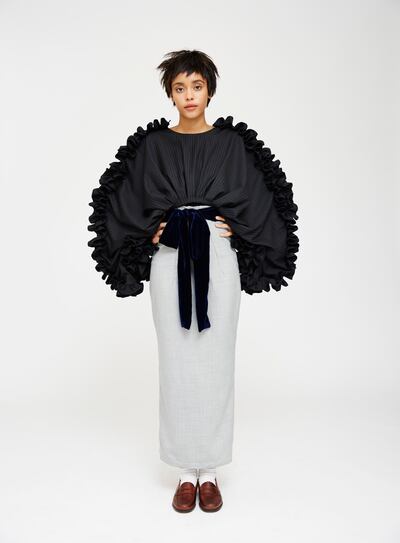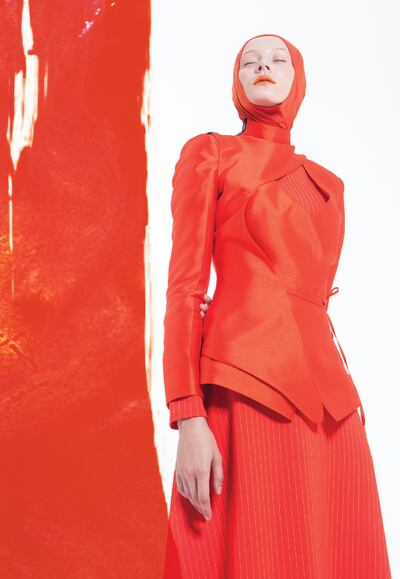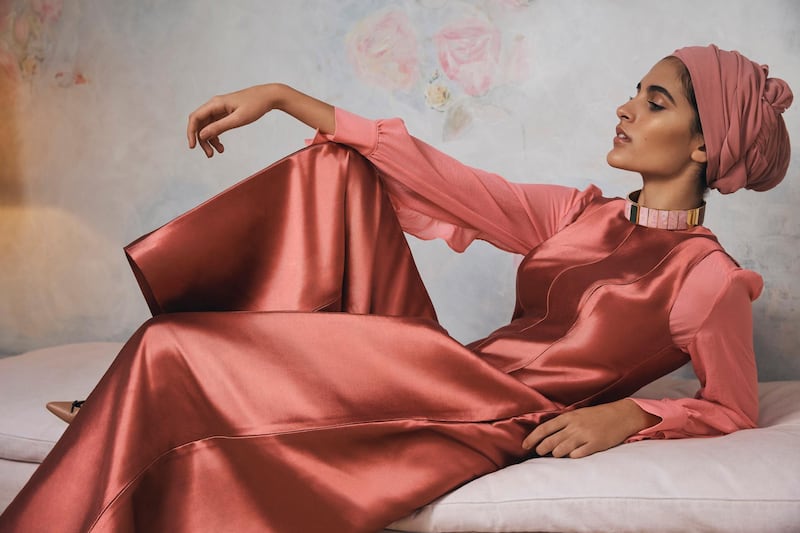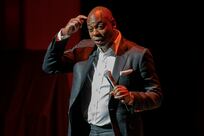Given that almost a quarter of the world's population – about 1.8 billion people – identify as Muslim, it is notable that no major exhibition has looked at the influence that such a huge market has had on the fashion industry. Until now, that is.
The Fine Arts Museums of San Francisco (FAMSF, which consists of two bodies, de Young and the Legion of Honour, and is one of the most visited arts institutions in the United States) is set to host a show entitled Contemporary Muslim Fashions, from September 22 until January 6. The exhibition at the de Young Museum promises to look at how Muslim women – covered or not – are becoming a driving force in the fashion community.
Anyone living in this part of the world will already be conversant in the subtle nuances of modest dressing, from the seemingly endless ways to wear a shayla, to the act of layering a subtle polo neck under a dress to totally transform an outfit. For others, though, this show will offer welcome insight into an arena that is all too often misunderstood. There are still strong preconceptions that modest dressing equates solely to shapeless black.
Such misconceptions have always existed; however, history shows us that there has long been a cross-pollination between eastern and western styles of dressing.
With trading connections between the Middle East and the rest of the world stretching back centuries, Islamic dress codes have travelled too – while Spain was under Islamic rule between AD 711 and AD 1492, many women took to wearing veils regardless of their religious slant.
Yves Saint Laurent, the godfather of Parisian fashion who grew up in Algeria, often used Islamic modes of dress as inspiration, in particular for his 1976 Rive Gauche advertising campaign, which featured women in intricately wrapped headscarves.
Max Hollein, the former director of FAMSF who joined the Metropolitan Museum of Art in New York in August, was the man responsible for bringing the show to life. "Contemporary Muslim Fashions is an overdue, much-needed exploration of a multifaceted topic as yet largely unexplored by museums," he points out.
“The Muslim fashion scene is extremely vibrant and influential, with some of the most stunning works I’ve recently seen; it seemed like a blatant omission that this topic had yet to be explored by a major institution. When I took over as director of the Fine Arts Museums of San Francisco with exhibition curators Jill D’Alessandro and Laura Camerlengo, we decided that this was the time to correct the omission.”
Given the collective spending power of the Islamic population, omission is exactly the right word. The State of the Global Islamic Economy Report by Thomson Reuters and DinarStandard estimates that Muslim spend on clothing amounted to US$254 billion (Dh933.01bn) in 2016, and is forecast to reach $373bn by 2022.
It also predicts that as the global population expands, millennials will be the engine of change across the retail economy. By 2027, millennials will be a 2.8-billion-strong core consumer force, and by 2030, 29 per cent of the global young population (people between the ages of 15 and 29) is projected to be Muslim.
In the United Kingdom, which has a Muslim population of 2.7 million, the Muslim Council of Britain has put the community's spending power at £20.5bn (Dh96.85bn) a year. Fashion brands that ignore these numbers do so at their peril, which is why many have jumped into the fray.
Dolce & Gabbana launched an abaya collection in 2015, while Japanese brand Uniqlo began its tie-up with British-Japanese Muslim designer Hana Tajima in 2016, launching the Uniqlo x Hana Tajima line, which consists of loose-fitting flowing casual wear crafted from soft linens and cottons.
Nike released the Nike Pro hijab late last year, a few months after Yeezy and Max Mara put hijab-wearing model Halima Aden on their runways. Even the likes of Dominican couturier Oscar de la Renta and Filipino-American designer Monique Lhuillier have created dedicated Ramadan collections. Meanwhile, devotees of YouTube will already be familiar with Russian-Algerian-Turkish influencer NabiilaBee, whose hijab tutorials have garnered millions of views.
Modest clothing has been seen on international runways with increasing regularity in the past few seasons, embraced by growing numbers of customers, who are either driven by their religious beliefs, or the simple desire to find an alternative to tight, restrictive, revealing clothing.
Another sign that modesty is filtering through came last year, when Ayana Ife, a Muslim fashion designer, made it to the finals of TV show Project Runway. While some may still be happy to dismiss modest dressing as a niche market, clearly there is a global appetite for it.
With such a large topic to cover, Contemporary Muslim Fashions is split into various sections, mainly governed by geography, and places a spotlight on garments and styles from around the world. The main galleries focus on the Middle East, including the UAE, Kuwait and Saudi Arabia, which is represented by labels such as Mashael, a Saudi brand that plays with surface texture and shifting scale on what otherwise seem like deceptively simple cuts.

The UAE is represented by Bouguessa, whose minimalist cuts have drawn a large and devoted following, and The Modist, the online portal dedicated to bringing high-fashion modestwear to discerning customers.
Another section is dedicated to South-East Asia, an enormous modestwear market because it is home to such a large Islamic population. Indonesia, for example, has about 225 million Muslims (about 88 per cent of the country’s population).
Indonesian designer Itang Yunasz blends modern shapes with traditional techniques, including the highly distinctive indigo ikat weaving of Timor. Another name featuring in the exhibition is Dian Pelangi, an Indonesian designer and digital influencer who was named by the Business of Fashion as one of the top 500 people shaping fashion, aided no doubt by her 4.8 million Instagram followers and 14 stores.
Pelangi regularly shows at Jakarta Fashion Week, and interweaves sharp cuts with traditional regional textile techniques, such as hand-drawn batik and tie-dye. Pelangi is also a keen documenter of Muslim street style and has published a book on the topic. Meanwhile, Malaysian designer Haslinda Rahim's label Blancheur specialises in high-end modestwear that includes sharply cut trouser suits and dramatically tailored jackets that segue into tops.

Many of the labels included in the exhibition deal with high-end design, but street style is also represented, most notably Sarah Elenany from London, who started her line to provide practical, wearable modest clothes for active, sporty women.
In 2015, Elenany made her design for a sport hijab hoody available for free download, for anyone to make. Also from the UK is Rebecca Kellett, whose work brings a costume-like feel to clothing, with sculptural necklines and exaggerated shapes. She was nominated for the Best Costume Design Award in 2015 by the International Fashion Film Awards.
With such a expansive area to cover, Hollein skilfully drew on the museum’s own track record to introduce Islamic fashion to a new audience.
“FAMSF is well positioned to tell this story; it has a long history of creating critically acclaimed fashion exhibitions, including Oscar de la Renta, Jean Paul Gaultier, Balenciaga and Spain, and Yves Saint Laurent.”
Ultimately, fashion is and always will be subjective – one woman’s Manolos are another woman’s menace – and not every designer selected for this show will resonate with an American viewer. That aside, the fact that this exhibition is taking place at all is a real cause for celebration. Whether one sees modest dressing as a religious requirement or just a personal preference, the important point is that, today, women have a multitude of choices.
"Museums are places where you can have complex cultural discussions in non-polemical ways, and Contemporary Muslim Fashions is a unique platform to engage with issues that are extremely relevant to today's audiences," Hollein concludes.
_____________________
Read more:
[ Modestwear reaches Milan thanks to the UAE's Islamic Fashion & Design Council ]
[ Fashion forward: the rise of UAE's homegrown brands ]
[ Beyoncé wears design by Dubai-based brand Bouguessa ]
_____________________






